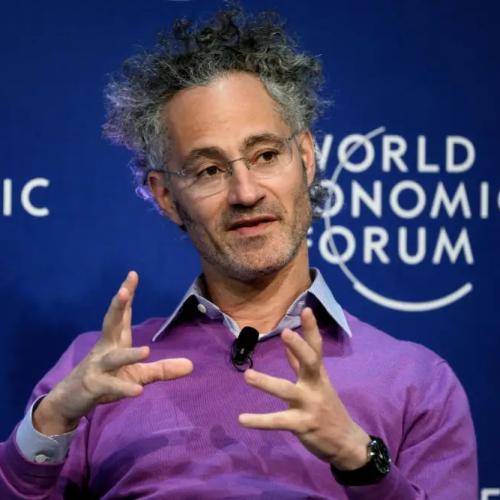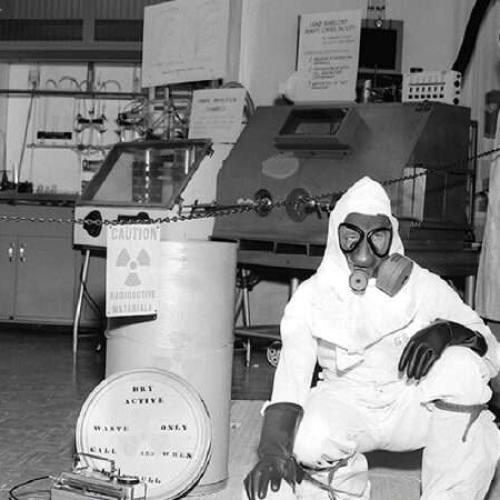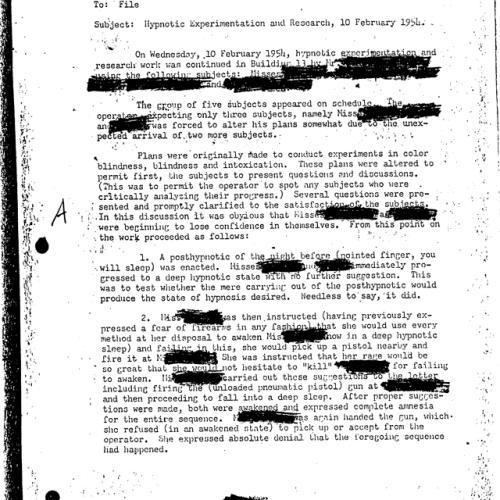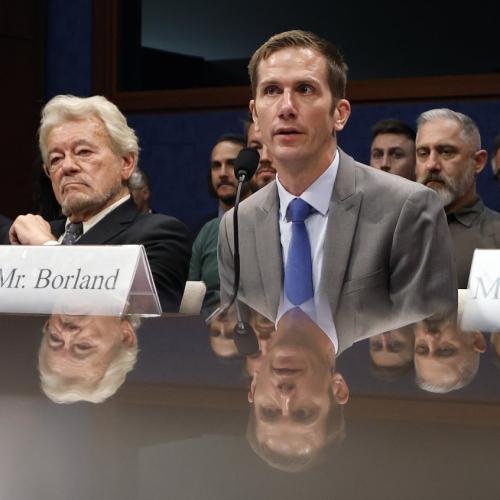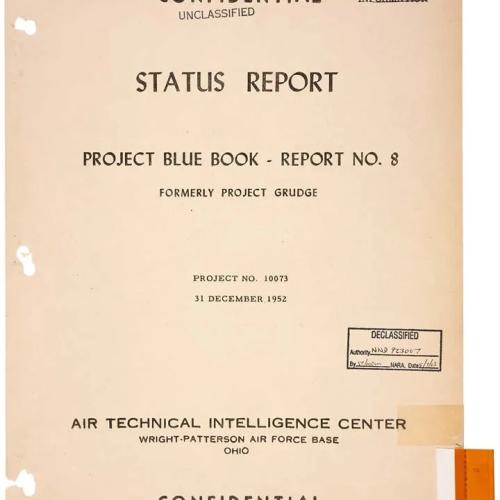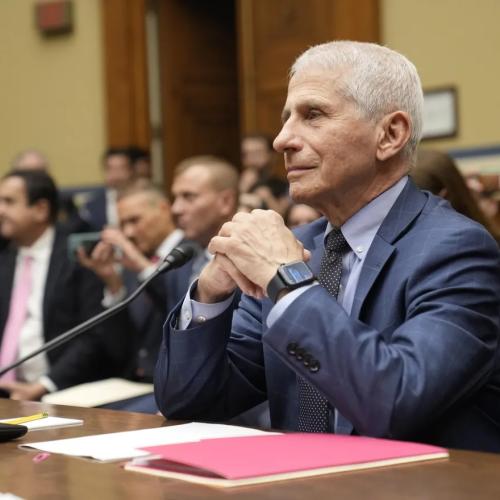Energy News Stories
Below are key excerpts of revealing news articles on energy from reliable news media sources. If any link fails to function, a paywall blocks full access, or the article is no longer available, try these digital tools.
For further exploration, delve into our Energy Information Center.
As if the images of this MSV Explorer prototype amphibious vehicle werent arresting enough, Cornish inventor Chris Garner claims to have solved the centuries-old conundrum of perpetual motion which could lead to electric cars that never have to be recharged. Garner ... is utterly convinced that what hes come up with will work, saying hes spent 35,000 hours of science on the project so far. Its called the hyper performance gyro generator, and he doesnt just want us to take his word for it instead hes having it tested ... at the University of Plymouth next week. Garner prefers to call it self-sustaining energy. He explained that the gyro gen functions on the principle that it can go from 1rpm to 6,000rpm with very little in the way of friction or drag. Once spinning it wont stop until it wears out. If the resulting ampage ... is higher than that required to power an electric motor then youve got free fuel for travel. In the example currently under development, the gyro gen produces 1,600 amps, far more than the 400 amps required to drive a pair of motors. The remaining electrical energy could then be used to power ancilliaries, such as air conditioning, lights and so forth. Whether it all works in reality remains to be seen well have a better idea after the tests next week but it could mean a future free from electric vehicle range anxiety for all of us.
Note: To get the full story on this, click on the MSN link above and then click through the 14 slides of the vehicle there. For lots more great information on this exciting new technology, click here.
Bankrupt Patriot Coal Corp. agreed [on November 15] to become the first U.S. coal operator to phase out and eventually stop all large-scale mountaintop removal mining in central Appalachia, under an agreement reached with three environmental groups that sued over pollution from several West Virginia operations. St. Louis-based Patriot said the proposed agreement allows it to postpone as much as $27 million in expenses into 2014 and beyond, improving its liquidity and the likelihood it can successfully emerge from Chapter 11 protection as a viable business. Mountaintop removal is a highly efficient but particularly destructive form of strip mining unique to West Virginia, Kentucky, Virginia and Tennessee. Coal companies blast apart mountain ridge tops to expose multiple coal seams. The resulting rock and debris is dumped in streams, creating so-called valley fills. Patriot is one of the largest mountaintop removal operators in the region. Presented to U.S. District Judge Robert Chambers in Huntington for consideration, the agreement came out of water pollution lawsuits filed by the Sierra Club, Ohio Valley Environmental Coalition and West Virginia Highlands Conservancy. Michael Brune, executive director of the Sierra Club, called the agreement a historic moment in the fight against what he called an "abhorrent" form of mining. "Patriot Coal may be the first company to cease mountaintop removal mining, but because of the tireless efforts of committed volunteers and community organizations, it certainly won't be the last," he said.
Note: For deeply revealing reports from reliable major media sources on energy issues, click here.
October's record-setting jump in gasoline prices cost Californians $320 million, and yet state officials lack some of the basic information needed to ensure that refineries aren't playing games with the fuel market. That was the testimony [on November 15] at a hearing that explored the causes of the price spike, which saw the state's average price for a gallon of regular reach $4.67. The hearing could lead to legislation. With its own specialized gasoline blends made by just a handful of refineries, California has long been prone to price spikes. But four of the most severe on record happened in 2012. The October price spike began after an electrical outage suddenly shut down an ExxonMobil refinery in Los Angeles County. Fuel supplies in California had already been strained by the Aug. 6 fire at Chevron Corp.'s Richmond refinery, as well as the closure of a crude-oil pipeline in the Central Valley. Severin Borenstein, director of the University of California Energy Institute in Berkeley, noted that the state's reliance on just a few refining companies gives those businesses significant power over the market, even if they don't conspire to raise prices. No pipelines connect California to refineries in the Midwest or on the Gulf Coast, leading many analysts to label the state an "energy island." "Unfortunately, we've created a situation in the California market where because we're an island and because it's pretty concentrated, we actually do have companies that are in a pretty strong position to raise prices by putting less (gas) on the market. There is no law against them doing that," [Borenstein said].
Note: For deeply revealing reports from reliable major media sources on corporate corruption, click here.
Drivers in the San Francisco Bay Area have become the first motorists in the nation to fill up their gas tanks with an algae-based biofuel. Biodiesel B20 is made from 20 percent algae and 80 percent petroleum, and can be used by any vehicle that runs on diesel. Advocates say it is the first in a wave of clean fuel to hit the marketplace. "We are putting a stake in the ground," said Matt Horton, chief executive officer of Propel Fuels, as he prepared to fill the first tank with the algae-based product at a Valero station in Redwood City. The fuel's algae was grown by South San Francisco-based Solazyme Inc. and already has been used in trials by the military and industrial companies. It was sold for about $4.25 a gallon at the Redwood City station, about the same as the average price for diesel fuel in California. Horton said most diesel vehicles could run on 100 percent algae fuel, but doing so would result in higher costs for consumers. He added that many automakers oppose allowing a mix higher than 20 percent.
Note: For deeply revealing reports from reliable major media sources on new energy developments, click here.
A University of Missouri professor has resurrected his two-decade-old work in the contested field of cold fusion. In 1991, Mark Prelas was part of a research team that conducted a fusion experiment that emitted a burst of millions of neutrons. The work stopped when funding was cut off. At the time, cold fusion claims had been dismissed as junk science. Prelas shifted to other work. But his neutron-producing experiment resumed this year, and he presented his findings at a cold fusion conference in August in South Korea. Prelas, now a professor in the university's Nuclear Science and Engineering Institute, received funding from the Sidney Kimmel Institute for Nuclear Renaissance at MU. In the original experiment, the team created an emitted neutron-recording device and expected to count about 10 neutrons a second. They reached a million neutrons in a second. With SKINR funding, [Prelas] re-created the experiment. More technologically advanced equipment has allowed for a better counting system, and in one run, his research team saw neutron emissions at similar levels to the 1991 observation. Rob Duncan, MU's vice chancellor of research, said ... "We've got to understand what this is. The focus clearly has to be on an opportunity to discover new physics and to understand new science. That really is our aim here at SKINR.
Note: For deeply revealing reports from reliable major media sources on new energy inventions, click here.
A small British company has produced the first "petrol from air" using a revolutionary technology that promises to solve the energy crisis as well as to help curb global warming by removing carbon dioxide from the atmosphere. Air Fuel Synthesis in Stockton-on-Tees has produced five litres of petrol since August when it switched on a small refinery that manufactures gasoline from carbon dioxide and water vapour. The company hopes that within two years it will build a larger, commercial-scale plant capable of producing a ton of petrol a day. It also plans to produce green aviation fuel to make airline travel more carbon-neutral. "We've taken carbon dioxide from air and hydrogen from water and turned these elements into petrol," said Peter Harrison, the company's chief executive. "There's nobody else doing it in this country or indeed overseas as far as we know. It looks and smells like petrol but it's a much cleaner and clearer product than petrol derived from fossil oil," Mr Harrison told The Independent. Being able to capture carbon dioxide from the air, and effectively remove the principal industrial greenhouse gas resulting from the burning of fossil fuels such as oil and coal, has been the holy grail of the emerging green economy. Using the extracted carbon dioxide to make petrol that can be stored, transported and used as fuel for existing engines takes the idea one step further.
Note: For deeply revealing reports from reliable major media sources on new energy technologies, click here.
Ranjana Bhandari and her husband knew the natural gas beneath their ranch-style home in Arlington, Texas, could be worth a lot - especially when they got offer after offer from Chesapeake Energy Corp. Their repeated refusals didn't stop Chesapeake, the second-largest natural gas producer in the United States. This June, after petitioning a Texas state agency for an exception to a 93-year-old statute, the company effectively secured the ability to drain the gas from beneath the Bhandari property anyway -- without having to pay the couple a penny. In fact, since January 2005, the Texas agency has rejected just five of Chesapeake's 1,628 requests for such exceptions. Chesapeake's use of the Texas law is among the latest examples of how the company executes what it calls a "land grab" -- an aggressive leasing strategy intended to lock up prospective drilling sites and lock out competitors. Chesapeake has become the principal player in the largest land boom in America since the California Gold Rush of the late 1840s and 50s, amassing drilling rights on more land than almost any U.S. energy company. After years of leasing tracts from New York to Wyoming, the company now controls the right to drill for oil and gas on about 15 million acres -- roughly the size of West Virginia.
Note: For deeply revealing reports from reliable major media sources on corporate corruption, click here.
Tesla Motors Inc. unveiled a solar-powered charging station ... that it said will make refueling electric vehicles on long trips about as fast as stopping for gas and a bathroom break in a conventional car. CEO Elon Musk said ... that the company’s roadside Supercharger has been installed at six highway rest stops in California. The free stations are designed to fully charge Tesla’s new Model S sedan in about an hour, and a half-hour-long charge can produce enough energy for a 150-mile trip, he said. The first six, which were developed and deployed in secret, are in Barstow, Hawthorne, Lebec, Coalinga, Gilroy and Folsom. Tesla spokeswoman Christina Ra said they are open only to company employees, but would be available to the public in early October. Musk said his Palo Alto-based company planned to have more stations running throughout California and in parts of Nevada and Oregon by the end of the year, and expected to blanket ‘‘almost the entire United States’’ within two years. Tesla unveiled the Model S, its first mass-market vehicle, in June. The base model costs sells for $49,900 after a federal tax credit. Along with persuading consumers that electric vehicles are practical, the charging stations were developed with an eye toward alleviating doubts about their environmental effects. Musk said the solar-powered stations in California would produce more clean energy than is needed to keep cars running.
Note: For inspiring reports from reliable major media sources on new developments in automotive and energy technologies, click here.
The U.S. Justice Department is ramping up its rhetoric against BP [formerly British Petroleum] for the massive 2010 oil spill in the Gulf of Mexico, describing in new court papers examples of what it calls "gross negligence and willful misconduct." The court filing is the sharpest position yet taken by the U.S. government as it seeks to hold the British oil giant largely responsible for the largest oil spill in U.S. history. Gross negligence is a central issue to the case, slated to go to trial in New Orleans in January 2013. A gross negligence finding could nearly quadruple the civil damages owed by BP under the Clean Water Act to $21 billion. The U.S. government and BP are engaged in talks to settle civil and potential criminal liability, though neither side will comment on the status of negotiations. Specifically, errors made by BP and Swiss-based Transocean Ltd, owner of the Deepwater Horizon platform, in deciphering a key pressure test of the Macondo well are a clear indication of gross negligence, the Justice Department said. "That such a simple, yet fundamental and safety-critical test could have been so stunningly, blindingly botched in so many ways, by so many people, demonstrates gross negligence," the government said in its 39-page filing.
Note: For deeply revealing reports from reliable major media sources on corporate corruption, click here.
A jolt of support from a popular Web cartoonist has re-energized a decades-long effort to restore a decrepit, 110-year-old laboratory once used by Nikola Tesla, a visionary scientist who was a rival of Thomas Edison and imagined a world of free electricity. In little more than a week, tens of thousands of donors from more than 100 countries have kicked [in] more than $1 million ... to pay for the restoration of Nikola Tesla's Wardenclyffe laboratory, located about 65 miles east of New York City. "Enormously, overwhelmingly, astounding," is how Jane Alcorn, president of the Tesla Science Center at Wardenclyffe [described] the project's newfound fortune. This summer Alcorn learned that Matthew Inman, a cartoonist who runs theoatmeal.com, posted a tribute to the scientist titled "Why Nicola Tesla is the Greatest Geek Who Ever Lived." Supporters of the Long Island effort reached out to Inman, a 27-year-old who lives in Seattle, and he and Alcorn began speaking. Last week, he posted a request for donations on IndieGoGo, a fundraising website, and the response was nearly instantaneous. Tesla amassed hundreds of patents for his discoveries over his lifetime. Among his most notable accomplishments are his work in developing alternating current and other research in the creation of wireless communication and radio. He conducted experiments with wireless electricity and erected a 187-foot tower that Alcorn said was to be the centerpiece of a worldwide communications and energy system. But after he lost funding for the project, it was torn down in 1917.
Note: Tesla, whose incredible achievements have largely been removed from history books, is having a great resurgence in interest. For more on this most intriguing inventor, click here. For deeply revealing reports from reliable major media sources on new energy inventions, click here.
The U.S. Defense Department will encourage companies to build solar power plants and wind farms on 16 million acres of open land surrounding military bases, making each base less dependent on the nation's aging electricity grid. The plan ... will help the military cut its $4 billion annual energy bill and help insulate bases from blackouts. A study the Defense Department released this year found that the lands surrounding four military installations in Southern California alone could generate seven gigawatts of solar energy, equivalent to the output of seven nuclear reactors. But the plan will not focus solely on the desert Southwest. Federal officials also will study the possibility of creating offshore wind farms near military bases along the country's coasts. Solar, wind, geothermal and biomass facilities developed near military bases will be used primarily to power those facilities. But the projects will be big enough that the private companies that finance and build them will be able to sell some excess energy to other users.
Note: For reports from reliable major media sources on energy developments, click here.
Santosh Devi is [a] 19-year-old, semi-literate woman from the backwaters of Rajasthan [who] has broken through India's rigid caste system to become the country's first Dalit solar engineer. While differences of caste have begun to blur in the cities, in rural India Dalits also known as "untouchables" are still impoverished and widely discriminated against. Santosh trained to be a solar engineer at the Barefoot College in Tilonia, 100km from Jaipur. The college was set up in 1972 by Sanjit "Bunker" Roy to teach rural people skills with which they could transform their villages, regardless of gender, caste, ethnicity, age or schooling. The college claims to have trained 15,000 women in skills including solar engineering, healthcare and water testing. Roy, 65, says his approach low cost, decentralised and community driven works by "capitalising on the resources already present in the villages". The college, spread over eight acres, runs entirely on solar energy, maintained by the Barefoot solar engineers. Since the solar course was launched in 2005, more than 300 Barefoot engineers have brought power to more than 13,000 homes across India. A further 6,000 households, in more than 120 villages in 24 countries from Afghanistan to Uganda, have been powered on the same model. Only villages that are inaccessible, remote and non-electrified are considered for solar power. A drop in the ocean, perhaps 44% of rural households in India have no electricity but these women are making an important contribution to the nation's power needs.
Note: For a very inspiring TED talk filled with great stories by the founder of this college, click here.
In a nation thirsting for energy, he loomed like a messiah: a small-town engineer who claimed he could run a car on water. The assertion based on the premise that he had discovered a way to easily split the oxygen and hydrogen atoms in water molecules with almost no energy would, if proven, represent a stunning breakthrough for physics and a near-magical solution to Pakistans desperate power crisis. By the grace of Allah, I have managed to make a formula that converts less voltage into more energy, the professed inventor, Agha Waqar Ahmad, said in a telephone interview. This invention will solve our countrys energy crisis and provide jobs to hundreds of thousands of people. Established scientists have debunked his spectacular claims, first made one month ago, saying they violate ironclad laws of physics. The quest to harness chemical energy from water is a holy grail of science, offering the tantalizing promise of a world free from dependence on oil. Groups in other countries, including Japan, the United States and Sri Lanka, have previously made similar claims. They have been largely ignored. Not so with Mr. Ahmad, even if he is an unlikely scientific prodigy. He graduated with a degree in mechanical engineering in 1990 from a small technical college in Khairpur, in southern Sindh Province, he said in the interview. For most of his career he worked in a local police department. He is currently unemployed. But he sprang up at a moment when Pakistan was intensely aware of its power shortcomings.
Note: For deeply revealing reports from reliable major media sources on new energy inventions, click here.
A word of caution about the Model S, Tesla Motors' new electric sedan: The S stays smooth and silent, even when it's flying down the highway. Absent gears, engine noise or any vibration that doesn't originate with a pothole, it's absurdly easy for Model S drivers to shred speed limits without the slightest clue. Depending on the range of the battery pack and other options, Model S prices range all the way from $57,400 to $105,400 before state and federal incentives. The Model S functions much like a typical, automatic transmission sedan. But it's not quite the same. Put the car in drive and take your foot off the brake pedal, for example, and the S doesn't go anywhere. It just sits there until you touch the accelerator. Push the accelerator, and the car responds instantly. There's no sense of an engine laboring to pick up speed. Like other electric vehicles, the Model S uses regenerative braking. The brakes capture some of the moving car's kinetic energy, convert it to electricity and use it to recharge the battery while you drive. It's one of the ways a Model S with the most expensive battery pack option can drive more than 300 miles without plugging in. With the Model S, the regenerative braking starts the moment you ease off the accelerator pedal. The drop in speed is so pronounced that the car's brake lights will go on, even before you touch the brake pedal itself. It feels almost like having two separate braking systems working at the same time.
Note: For lots more inspiring reports from reliable major media sources on new automotive and alternative energy technologies, click here.
For the past 10 years an unlikely coalition of geologists, oil drillers, bankers, military strategists and environmentalists has been warning that peak oil the decline of global supplies is just around the corner. We had some strong reasons for doing so: production had slowed, the price had risen sharply, depletion was widespread and appeared to be escalating. The first of the great resource crunches seemed about to strike. Some of us made vague predictions, others were more specific. In all cases we were wrong. Peak oil hasn't happened, and it's unlikely to happen for a very long time. ["Oil - The Next Revolution"] by the oil executive Leonardo Maugeri, published by Harvard University, provides compelling evidence that a new oil boom has begun. The constraints on oil supply over the past 10 years appear to have had more to do with money than geology. The low prices before 2003 had discouraged investors from developing difficult fields. The high prices of the past few years have changed that. Maugeri's analysis of projects in 23 countries suggests that global oil supplies are likely to rise by a net 17m barrels per day (to 110m) by 2020. This, he says, is "the largest potential addition to the world's oil supply capacity since the 1980s". The investments required to make this boom happen depend on a long-term price of $70 a barrel the current cost of Brent crude is $95. Money is now flooding into new oil: a trillion dollars has been spent in the past two years; a record $600bn is lined up for 2012.
Right now, renewable energy sources like solar and wind still provide just a small fraction of the worlds electricity. But theyre growing fast. Solar is growing exponentially. Across the globe, 55 terawatt-hours of solar power had been installed by the end of 2011. That may not seem like much in itself the United States by itself, after all, needed about one hundred times that much power in 2011. But solar has been growing at a stunning rate, as panels keep getting dramatically cheaper. If these exponential growth rates [continue] solar could provide nearly 10 percent of the worlds electricity by 2018. Official agencies keep underestimating the growth rate of renewables. The International Energy Agency is forecasting that solar will catch on much more slowly providing a mere 4.5 percent of the worlds electricity by 2035. But [t]he IEA has almost always underestimated how quickly wind and solar can grow. Forecasters have consistently been too pessimistic. For instance, back in 2000, the IEAs World Energy Outlook predicted that non-hydro sources of renewable energy would make up 3 percent of global energy by the year 2020. The world reached that point in 2008, well ahead of schedule. Using only current technology, renewables could technically provide the vast bulk of U.S. electricity by mid-century.
Note: The media has consistently underplayed the promising potential for alternative energy sources. The fact that the above is a blog and not a regular article in the Post is yet another example of this. For more on promising developments on energy technologies, click here.
Real Goods Solar, the nation's most established residential solar installer and integrator, is helping Americans separate solar fact from solar fiction with a free, downloadable myth-busting eBook known as 87 Solar Myths, available online at www.RealGoodsSolar.com. 87 Solar Myths is a quick read to dispel what solar professionals across the U.S. say are today's most pervasive solar industry inaccuracies. Interest is high. Nearly one thousand eBooks have been downloaded since its Earth Week release. 87 Solar Myths slaps down perennial [myths] such as "Solar technology is too expensive," "Coal power is cheaper than getting power from the sun," "A solar lease traps you in your home," or "$0 down solar is too good to be true," while confirming the veracity of other well-publicized solar tenets. "What we've learned in speaking with people across the U.S. over the years is that we aren't just in the business of solar, we're in the business of educating," explained Real Goods Solar Residential Marketing Director Cheryl Moody. "There are some whacky - and some serious - rumors that persist amongst consumers. Our goal is to equip homeowners with an unbiased source of information so that they can confidently make valid decisions as to how the benefits of solar energy could improve their circumstances," Moody said.
Note: For more on promising developments on energy technologies, click here.
Egyptian Aisha Mustafa, 19, has dazzled the physics world with a new invention that could launch spacecraft off the Earth's surface and soaring through space without any fuel. Space is filled with a billowing sea of quantum particles that jump in and out of existence, and Aisha Mustafa proposes using thin silicon panels, spaced closely together, to trap these particles and then move against them, creating a propelling force. This innovation would make space exploration lighter, safer and cheaper. Mustafa still has some design work to do, but unfortunately her research is currently limited by lack of state funding for space science departments at the university level, though her school's science club did help fund her application for a patent.
Note: For more on this intriguing innovation, click here.
The big number is 50. When companies can produce solar photovoltaic modules for less than 50 per watt, solar energy will be able to compete directly with coal. Right now, the cheapest solar cells are being produced for as little as 70 per watt. They are selling for about $1.26 per watt, with prices expected to drop to $1.17 next year. Most anticipate they they will hit 50 per watt within four or five years. As prices fall, demand is growing. Total solar installations in the second quarter [of 2011] grew by 69 percent over the same period in 2010. The number of Americans working in the solar industry more than doubled, to 100,000, from 2009 to 2011. Thats considerably more than the 80,600 coal miners working in the U.S. Behind the price drops are cheaper manufacturing costs, lower costs for such crucial raw materials as silicon, and rapidly improving technology. Dozens of startups in the U.S. have potentially transformative ideas. The question is which can come out on top. The wide variety of companies developing competing technologies to capture and distribute solar power underscores the markets immaturity. Currently, researchers are experimenting with materials ranging from silicon to gallium arsenide to cadmium telluride, basing cost projections on disparate technologies that create solar cells. The goal is to build one that competes without government subsidies.
Note: For lots more from reliable sources on developments in alternative energy technologies, click here.
German solar power plants produced a world record 22 gigawatts of electricity equal to 20 nuclear power stations at full capacity through the midday hours of Friday and Saturday. Norbert Allnoch, director of the Institute of the Renewable Energy Industry in Muenster, said the 22 gigawatts of solar power fed into the national grid on Saturday met nearly 50% of the nation's midday electricity needs. "Never before anywhere has a country produced as much photovoltaic electricity," Allnoch [said]. The record-breaking amount of solar power shows one of the world's leading industrial nations was able to meet a third of its electricity needs on a work day, Friday, and nearly half on Saturday when factories and offices were closed. Government-mandated support for renewables has helped Germany became a world leader in renewable energy and the country gets about 20 percent of its overall annual electricity from those sources. Germany has nearly as much installed solar power generation capacity as the rest of the world combined and gets about four percent of its overall annual electricity needs from the sun alone. It aims to cut its greenhouse gas emissions by 40% from 1990 levels by 2020. "This shows Germany is capable of meeting a large share of its electricity needs with solar power," Allnoch said. "It also shows Germany can do with fewer coal-burning power plants, gas-burning plants and nuclear plants."
Note: For lots more from reliable sources on developments in alternative energy technologies, click here.
Important Note: Explore our full index to revealing excerpts of key major media news stories on several dozen engaging topics. And don't miss amazing excerpts from 20 of the most revealing news articles ever published.













































